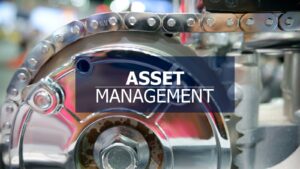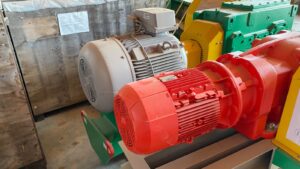Compressors are used in different industries and are mechanical assets which increase pressure in fluids or gasses. As compressors increase the pressure of a substance, it consequently reduces the volume of the substance. They are used for carrying out tasks such as powering air tools and phasing shift refrigerators. Various air compressors come in different shapes and sizes, including piston, diaphragm, helical screw, sliding vane, scroll, rotary lobe, centrifugal and axial. Each of these is used for different purposes and is specialised according to its function. This article will assess why mechanical asset managers should consider the life cycle of a compressor asset and what technologies can be infused to increase it.
Why Should You Be Increasing The Life Cycle of Compressor Assets?
Asset managers tend to believe that air compressors do not need maintenance. Some believe once an air compressor is brought and fit into operations, it will be robust for a promised period. However, air compressors have moving parts and hence will subsequently be at risk for wear, tears and malfunctions. The promised life cycle could decrease if they are not appropriately maintained. Thus, the life cycle of an asset is never a static component. Here are three reasons why you should be taking steps to increase the life cycle of compressor assets:
The Total Cost of Ownership or Life Cycle Cost May Indicate That There Is No Profitable Return of Investment
When an asset manager considers investing in an air compressor, it is not merely the purchase price that is regarded. Instead, the expense incurred for repairs, maintenance, procurement and operating equipment is considered. This is known as the total cost of ownership or life cycle cost. Hence, the financial investment of a compressor could be categorised as the purchase price, the overall maintenance price and the power or electricity required to operate the compressor. Taken as a whole, it is clear that asset managers will have to make expensive expenditures consistently. The life cycle of an asset must be consistently monitored to ensure all finances spent on assets are feasible.
Failure to Maintain Compressor Assets May Create a Hazardous Work Environment
The tendency for the air compressor to break down due to increased temperatures is common in any industry. When the temperature worsens, it can lead to the compressor burning and the entire factory being on fire. Sudden fires mean that many assets will be destroyed in the process and could significantly endanger employees’ lives on-site. It should be noted that a compressor which sets itself on fire is a clear indication that the mechanical asset manager has even ignored the most obvious signs that it requires maintenance. Industrial standards require companies not to let it come to a worst-case scenario level carelessly.
It Increases the Rate of CO2 Emissions
While CO2 emissions are hard to eliminate, one guaranteed way to reduce them from being emitted is by carrying out maintenance. Whenever an asset is in bad condition, it starts to depreciate in its quality. It is when quality starts decreasing that toxic gasses start to emit. This is especially true when it comes to air compressors. The extremely high temperature, if not controlled and not maintained, will lead the asset to break down slowly much earlier. From there onwards, the energy utilised to carry out operations is also more. This further puts the lives of those in the factory at risk. Therefore, it is not only the environment at risk but also humans.
Three Technologies That Can Help You Increase the Compressor Asset Life Cycle
The number of money wasted and other consequences that mechanical asset managers must face due to the lack of maintenance or repairs can be extremely costly. One way to reduce it is by taking measures to increase the compressor’s asset life cycle. Here are three technologies that managers can adopt to increase an asset’s durability.
Smart Sensors That Are Empowered by IIoT Technology
It is hard to detect signs of a compressor asset breaking down through manual checkups, no matter how experienced or specialised the expert is. This is why IIoT is necessary for mechanical asset managers. IIoT can easily detect any impending anomalies at its initial stage. Hence, it can find the root cause of potential threats and instantly notify the asset manager. Thus, managers can monitor a compressor’s health.
Predictive Analytics and Smart AI-Driven ML Protocols
Mechanical asset managers can gain more control of air compressors with predictive analytics. Predictive analytics takes advantage of the enormous amount of data processed through sensors and other smart devices by integrating the power of AI and ML to forecast breakdowns. By incorporating predictive analytics, random breakdowns and downtimes can be completely removed. A warning sign is removed entirely by asset managers when a specific anomaly is detected or formed. The manager can, after that, schedule maintenance and set reminders for the maintenance team to fix the issue in advance. This is a great advantage for companies that strictly adhere to a budget since receiving insights on potential breakdowns provides ample time to strategise and have enough money to cover repairs and maintenance. As predictive analytics consistently ensures fixing the issue before it occurs, this is one of the best ways to increase the life cycle of compressor assets.
Smart Digital Twin Technology
Mechanical asset managers use digital twin technology to ensure healthy compressor assets are made. With the help of IIoT sensors, AI and ML models, immersive technologies such as Virtual Reality and Augmented Reality and simulation technology, digital twin takes the designing, engineering and manufacturing of air compressors to the next level. It acts as a visualisation tool of a real air compressor that consistently monitors its condition in real time. It after that, provides detailed and insightful reports on how each asset could be made more robust and have longer life cycles. It does this by allowing managers to test out ‘what if’ situations and skipping the traditional process of ‘trial and error’. By considering how well an air compressor reacts to increased temperatures and other variables, the digital twin helps to make the most feasible air compressor.
Leave All the Hard Work to Smart Technologies
The biggest issue at one point was to find ways to prevent the number of malfunctions and breakdowns that occurred. Whether this was because money was spent at a rapid pace or whether it was unhealthy for employees working in the factory or the environment, it is always an advantage to have the insight and ability to prevent asset failures. Various industry 4.0 technologies have been introduced, which mechanical asset managers can use to ensure quality compressor assets. It automates a range of mundane processes, removes the chances of human errors, and can uncover anomalies and help managers respond to situations speedily.







